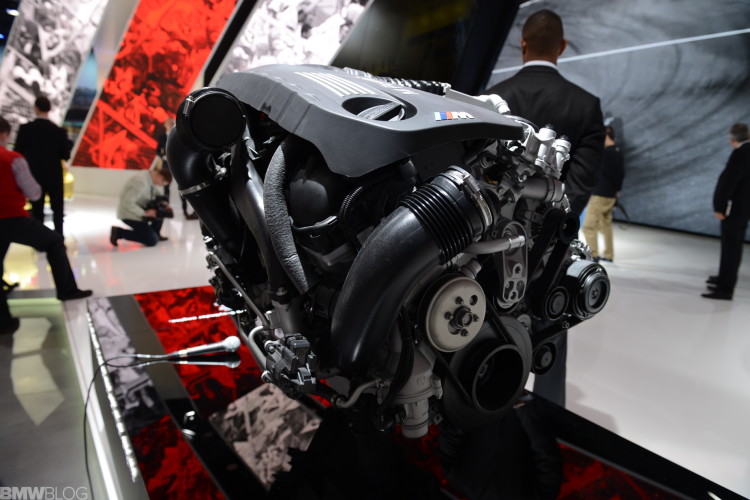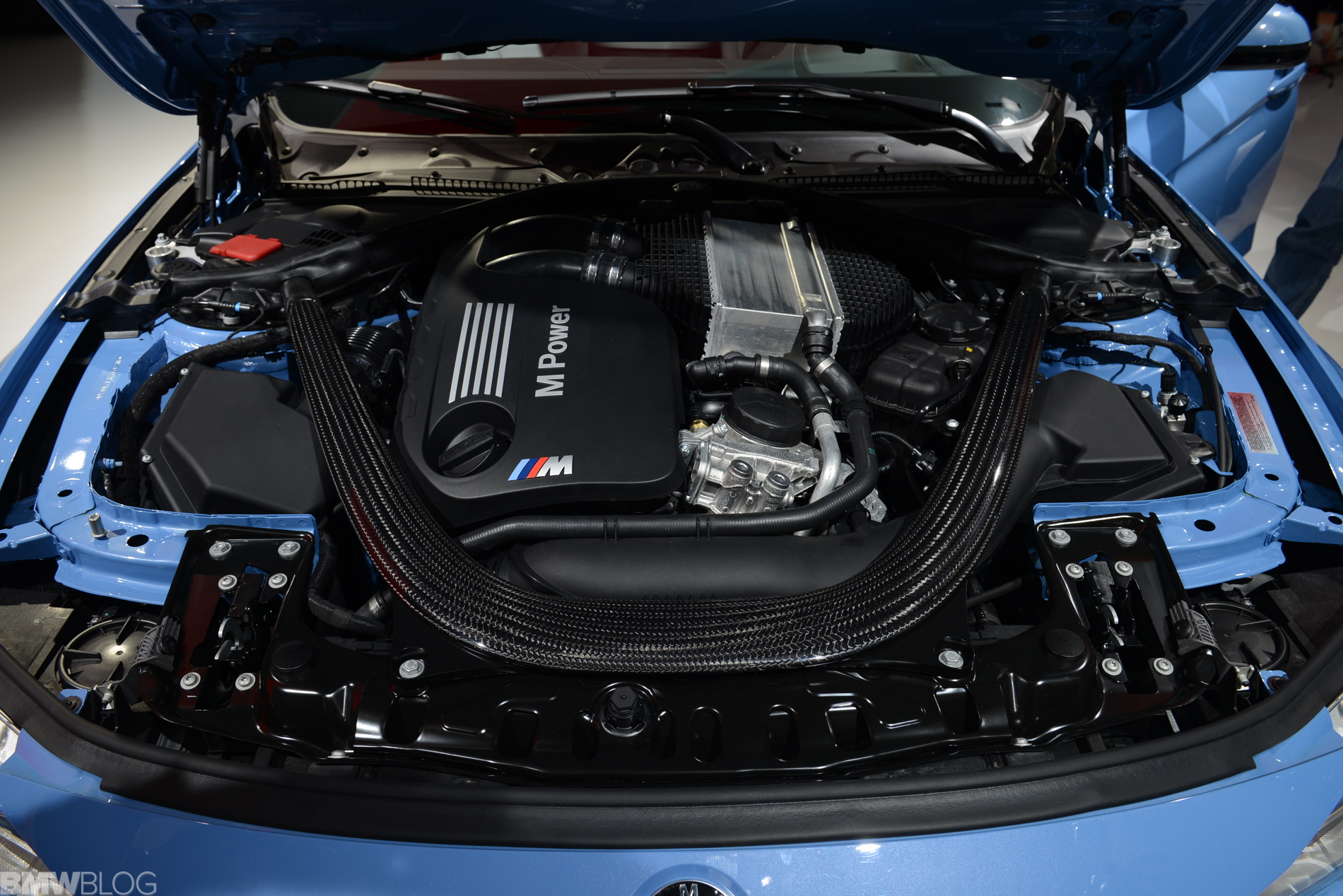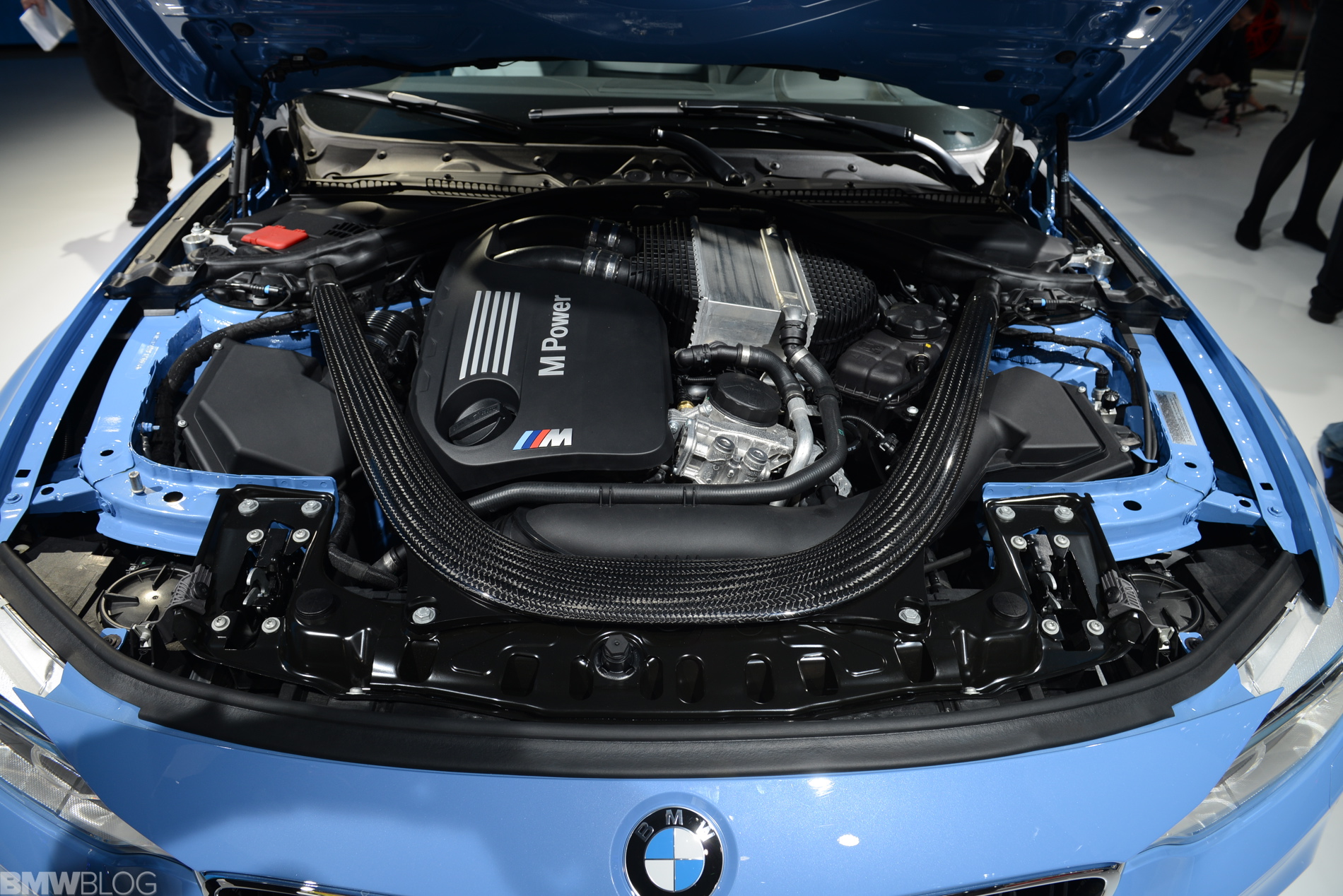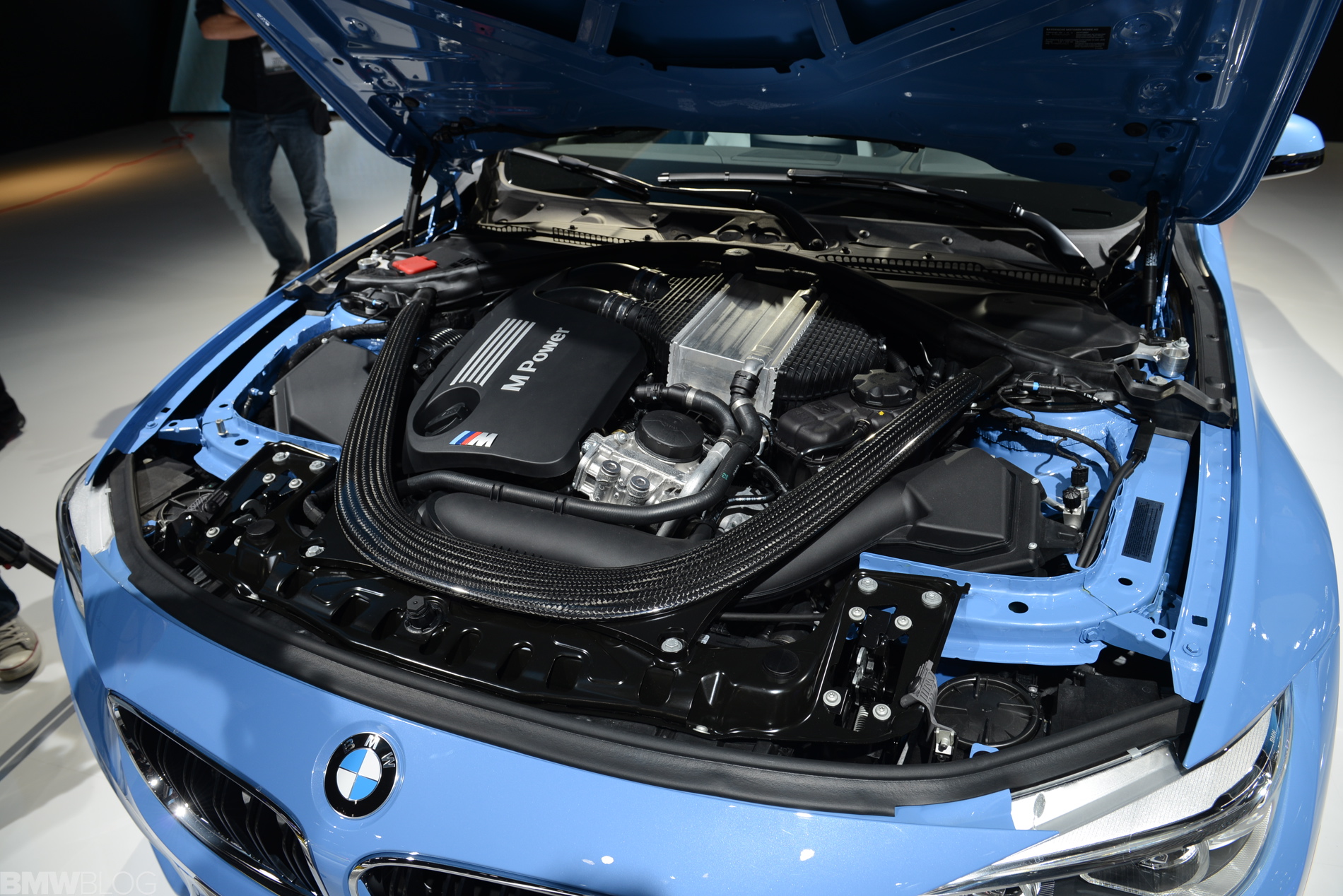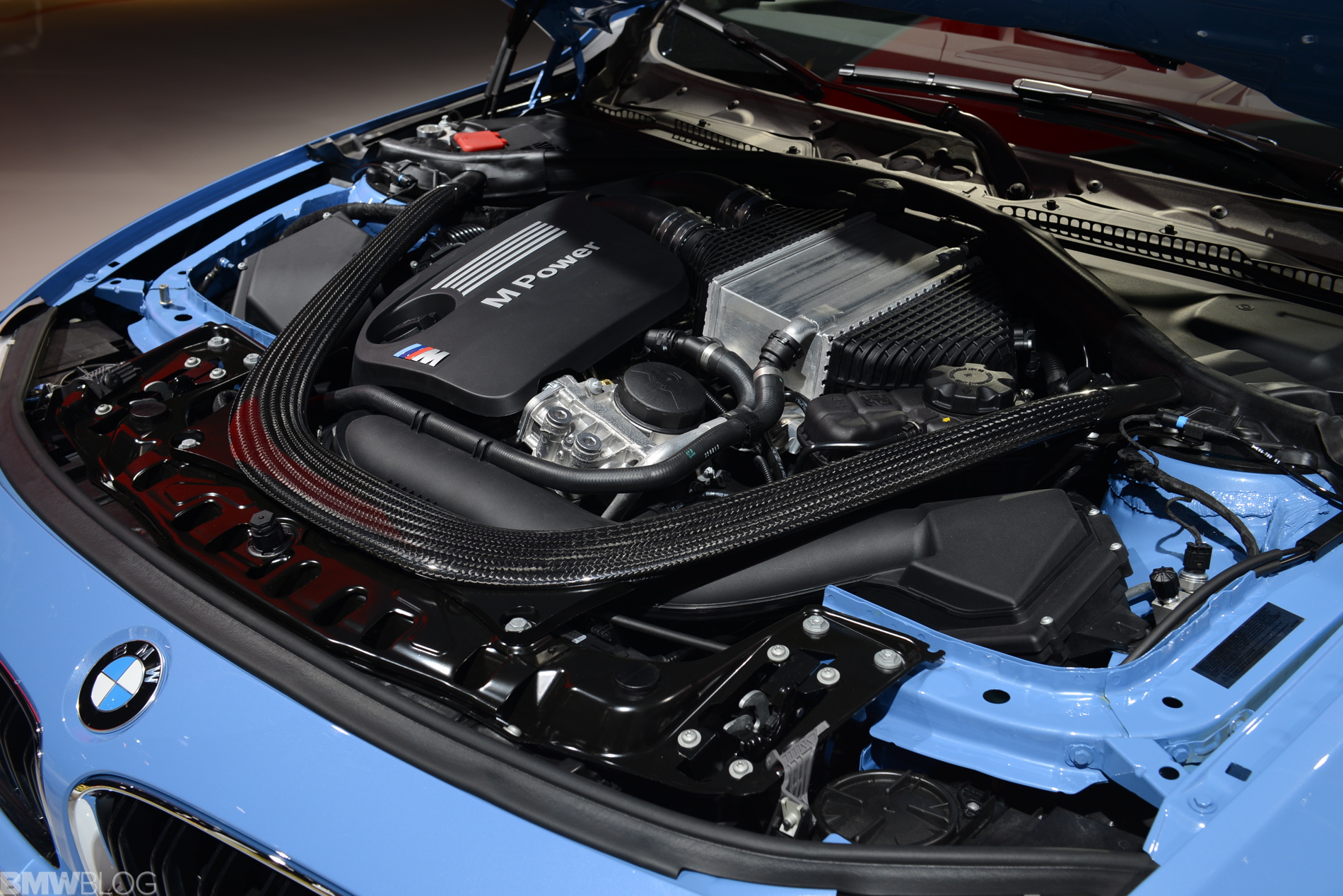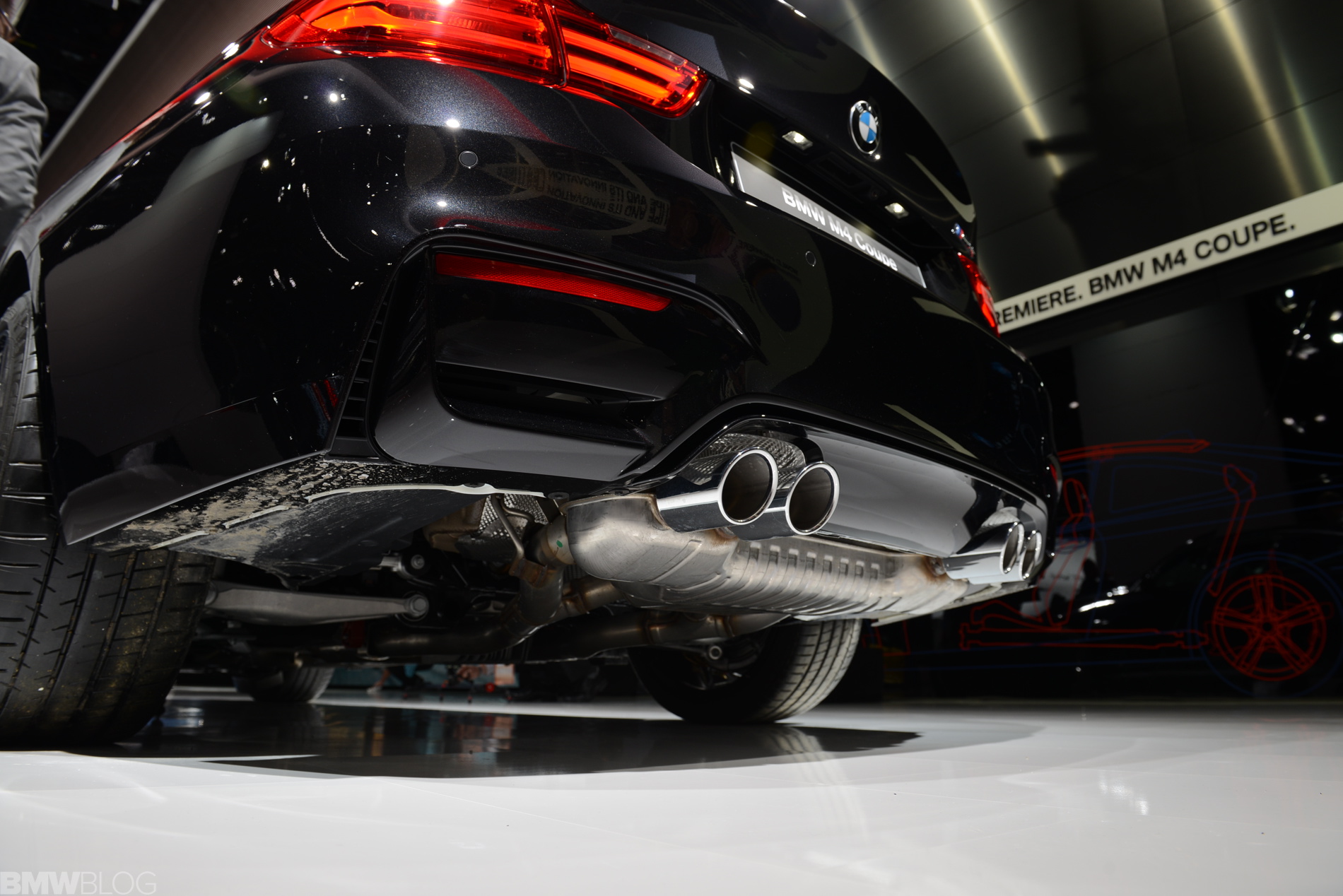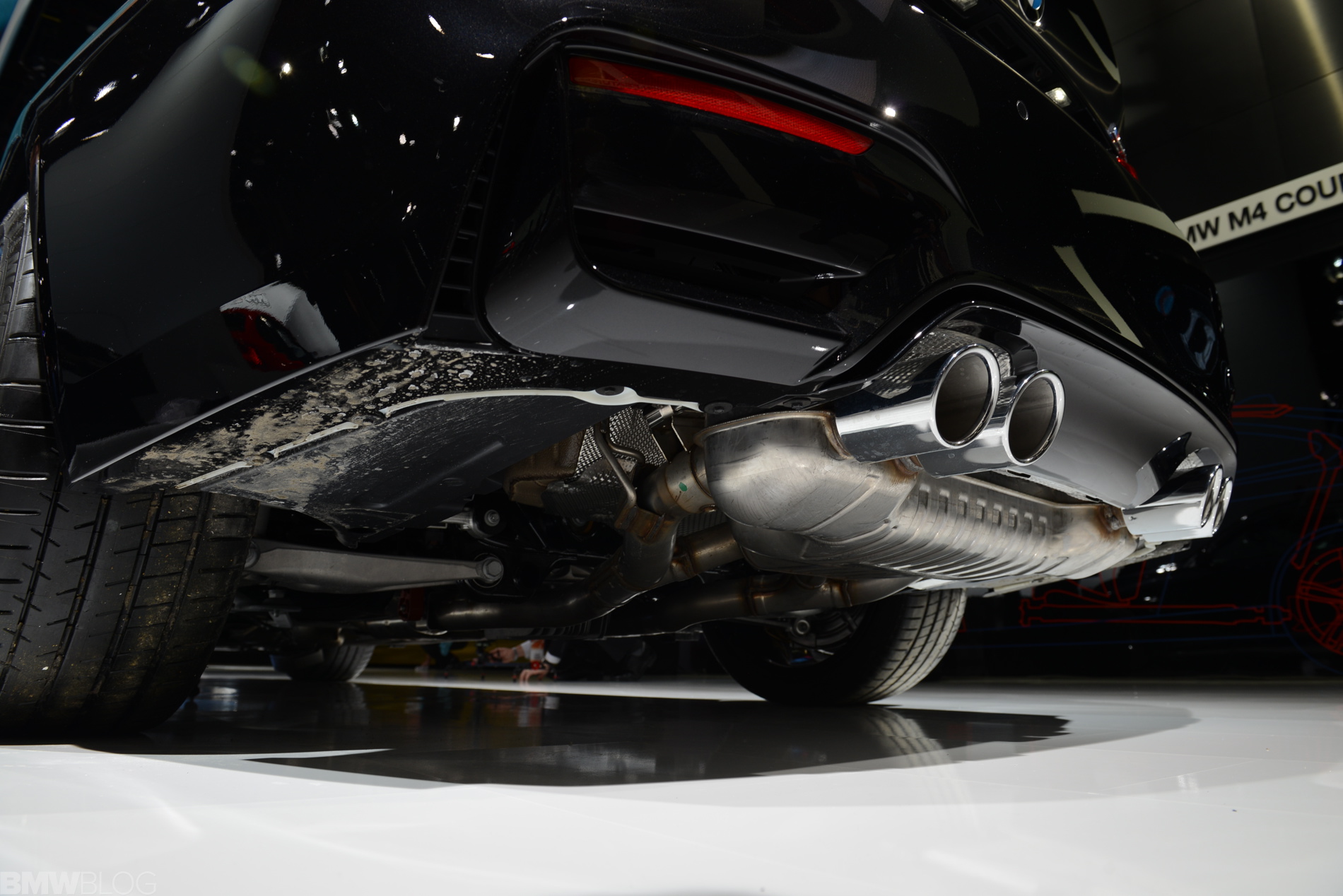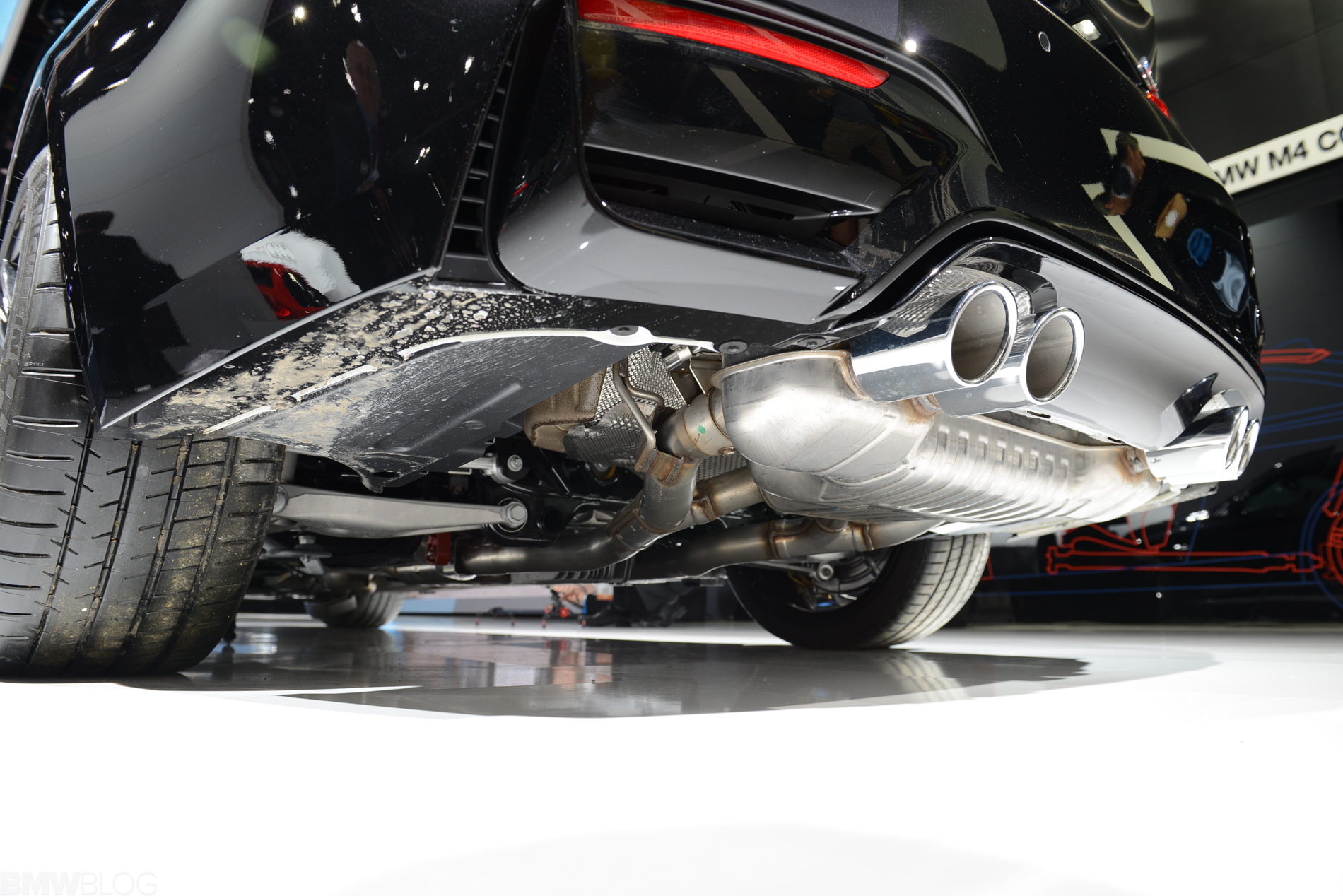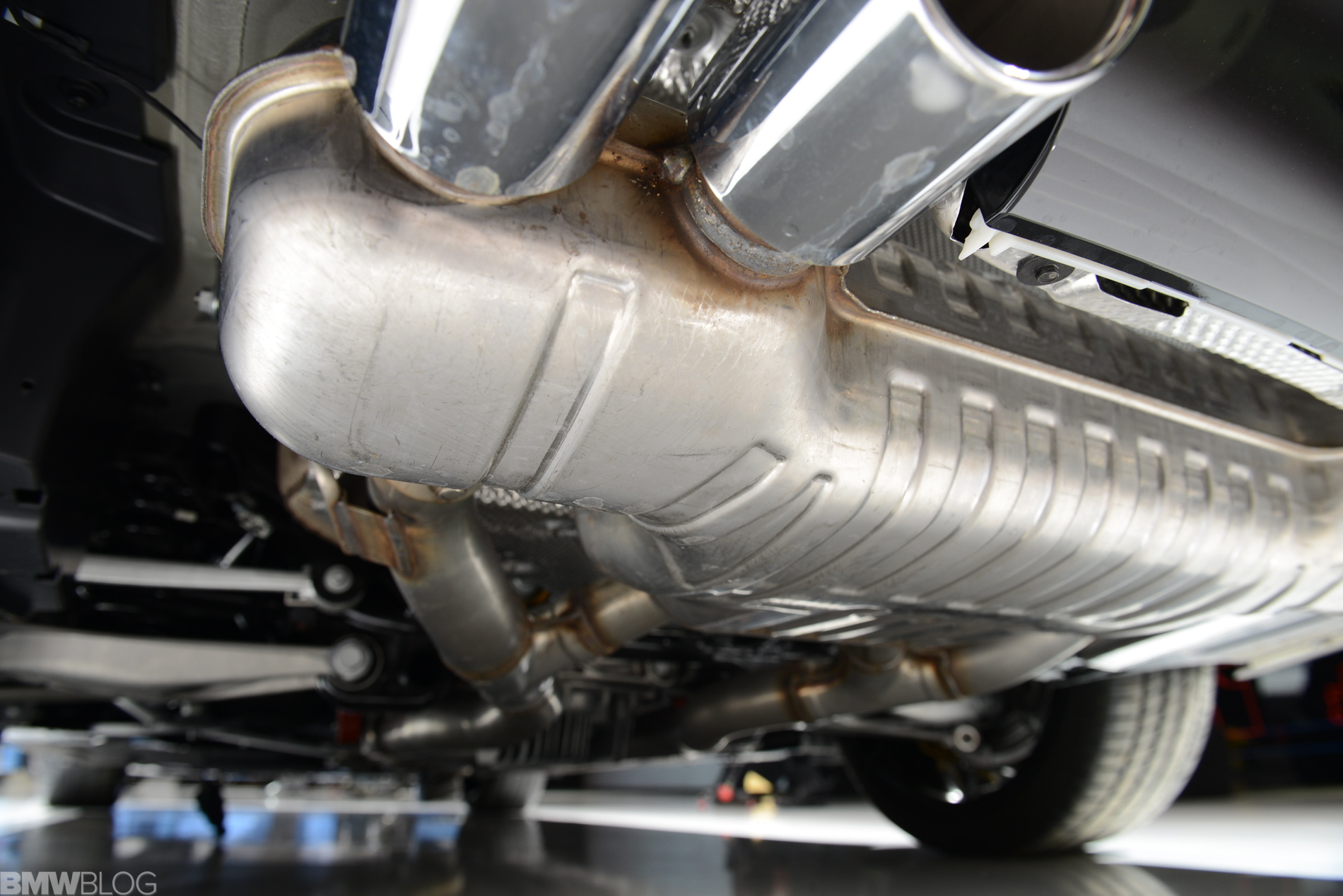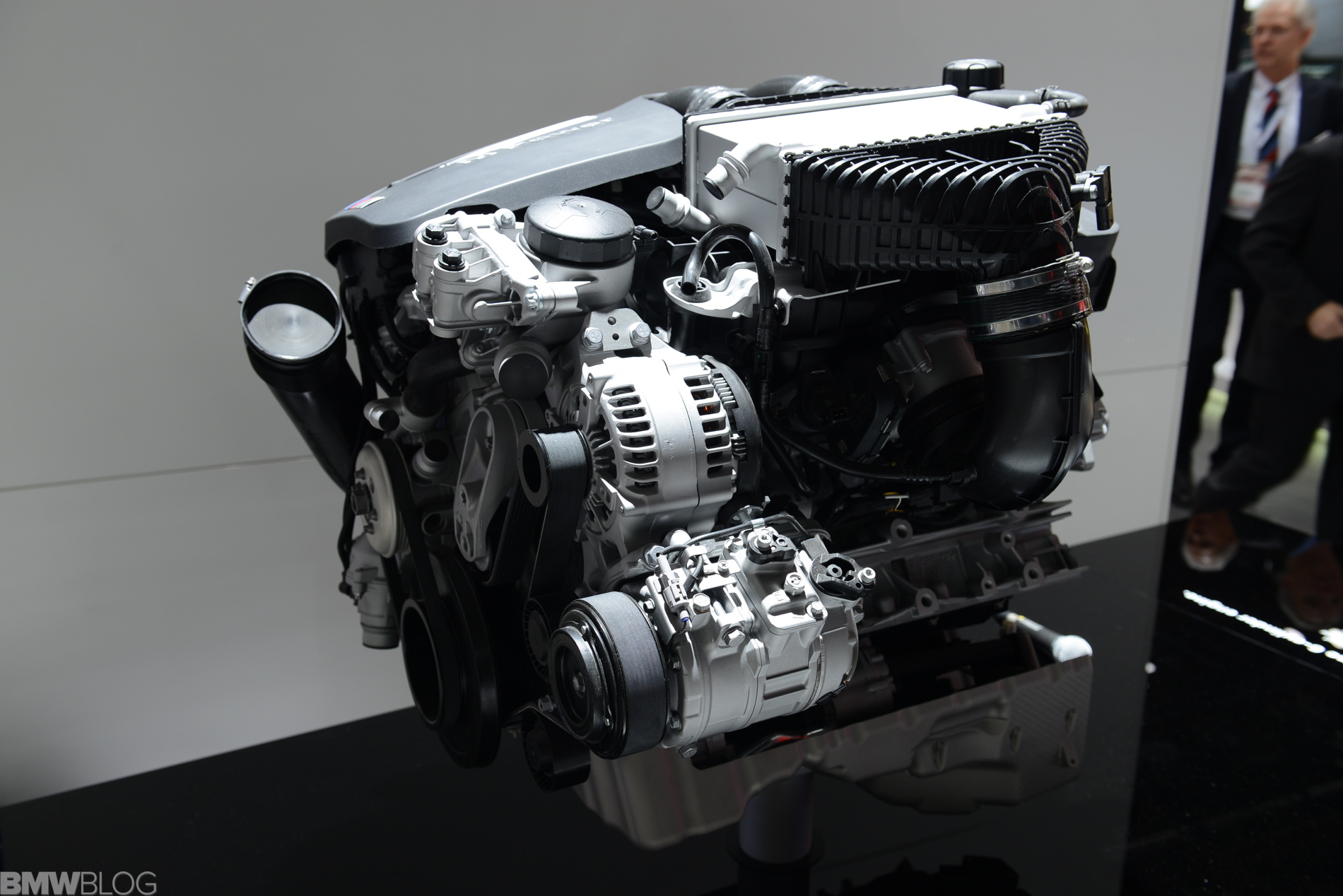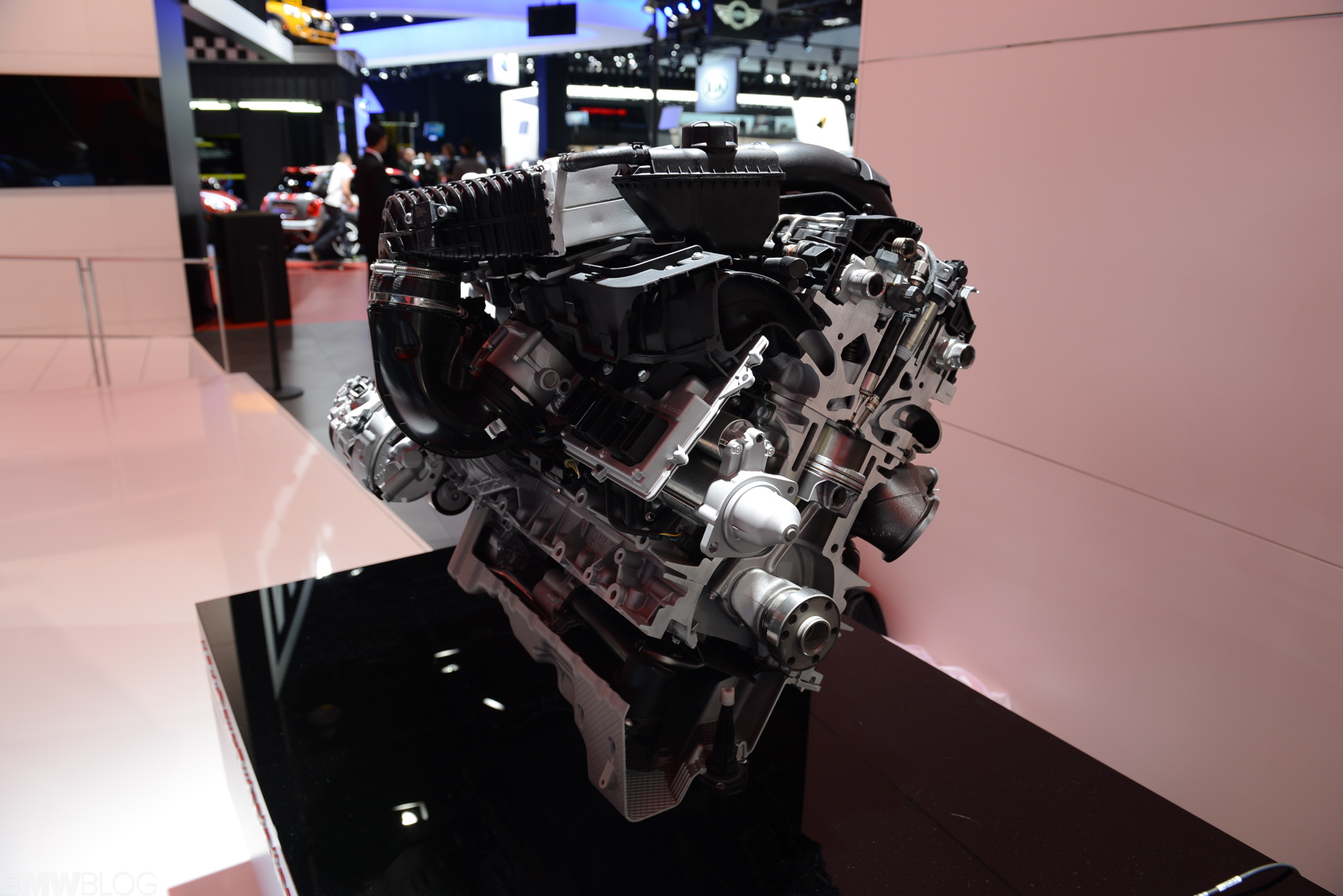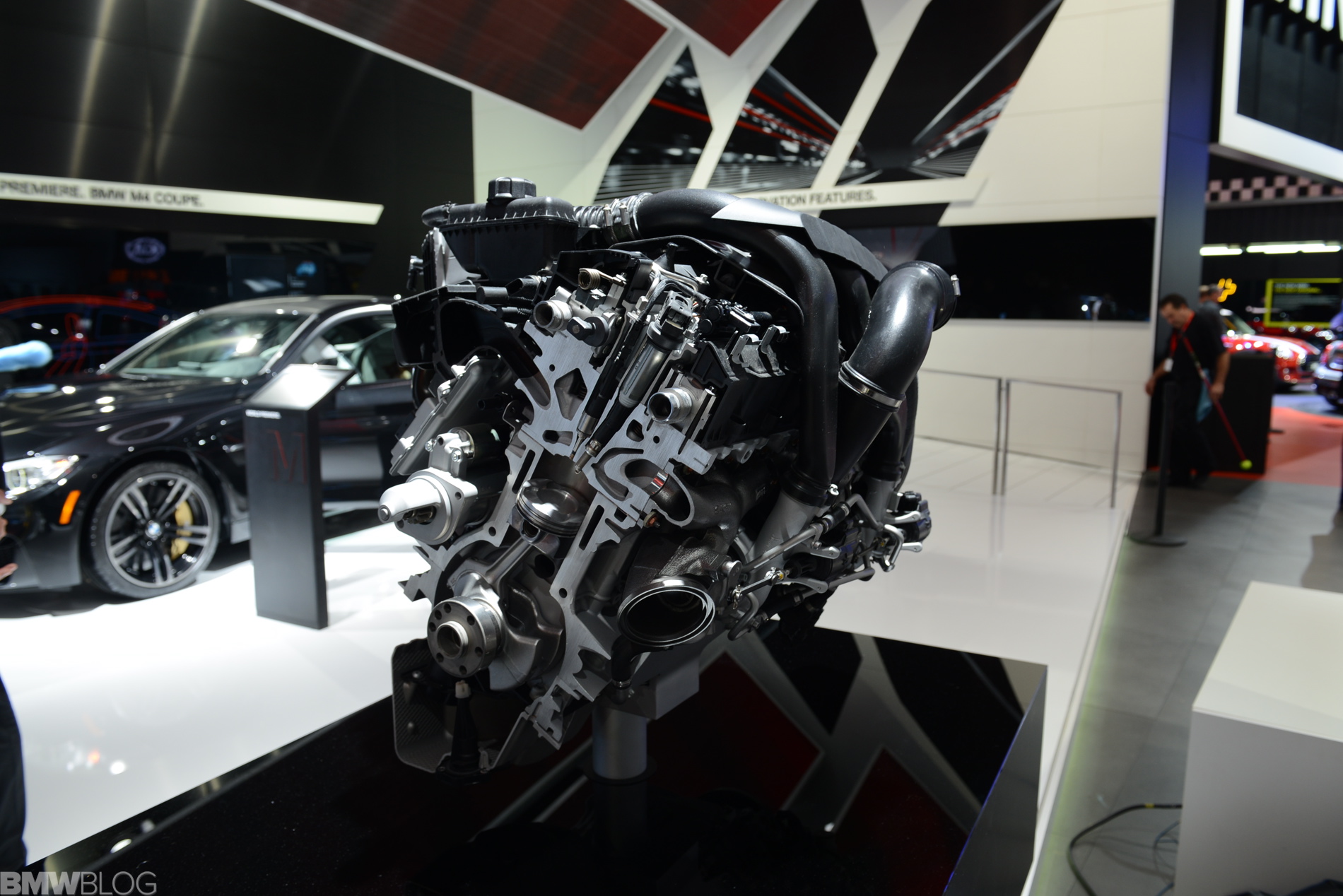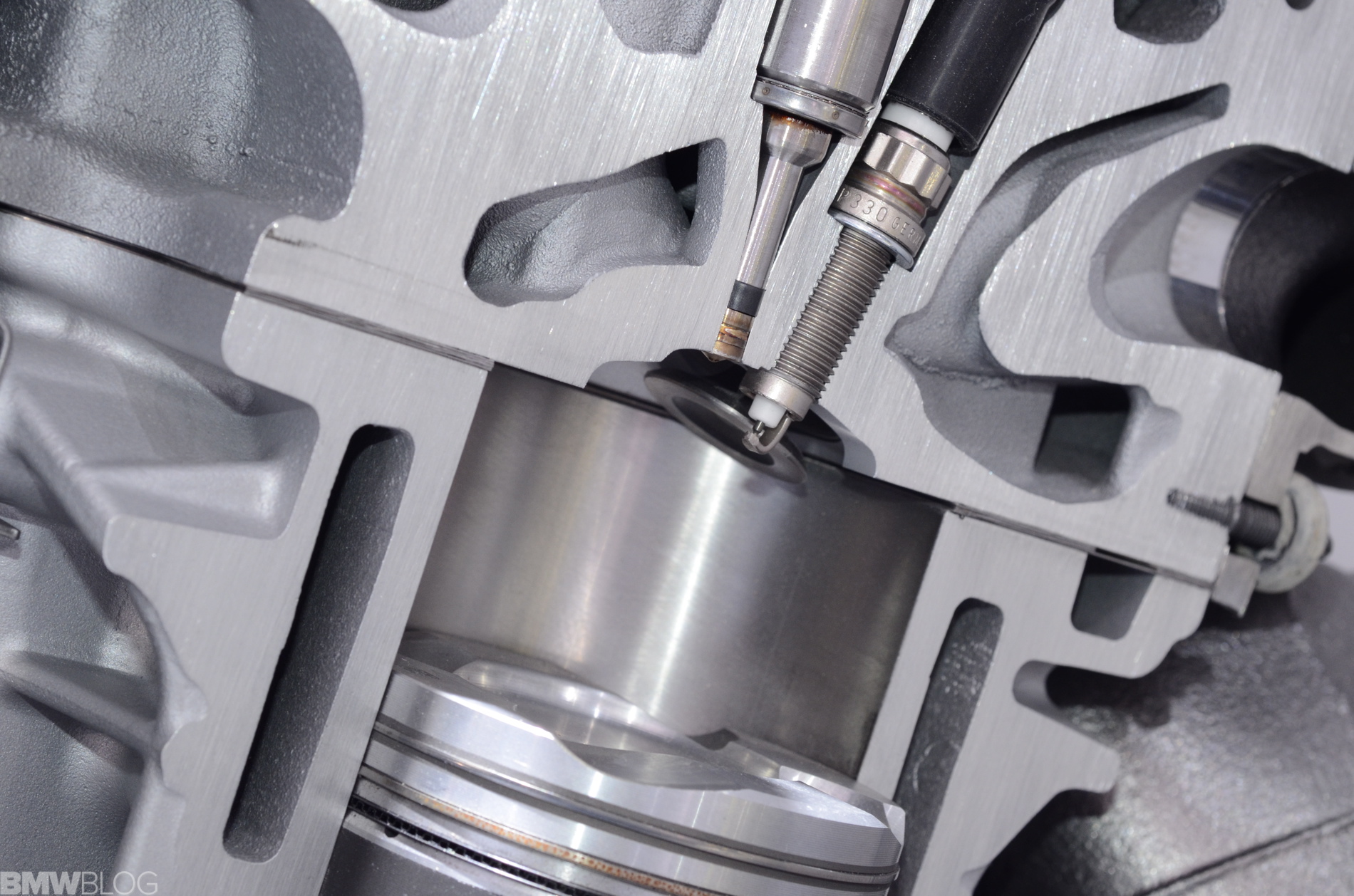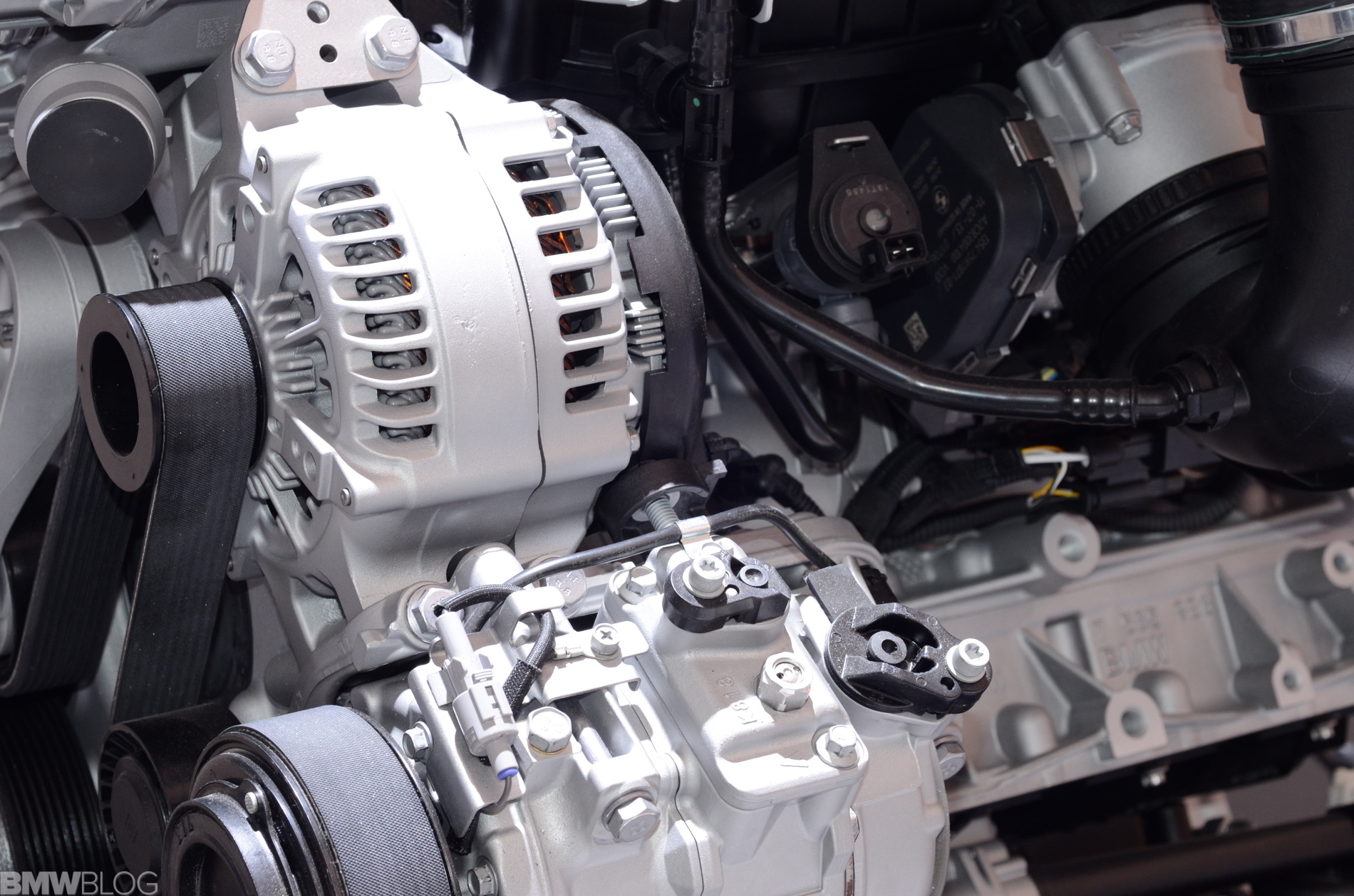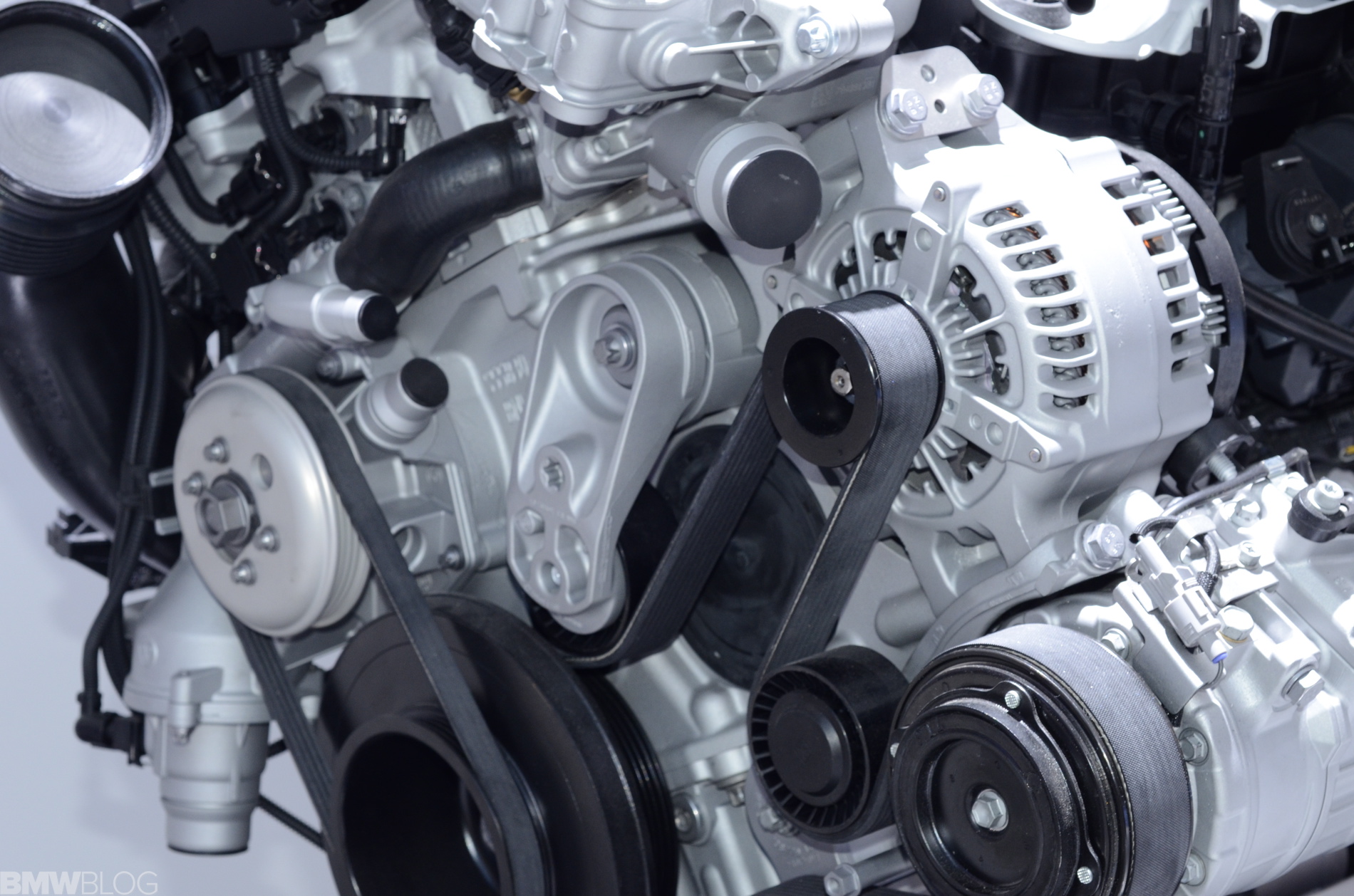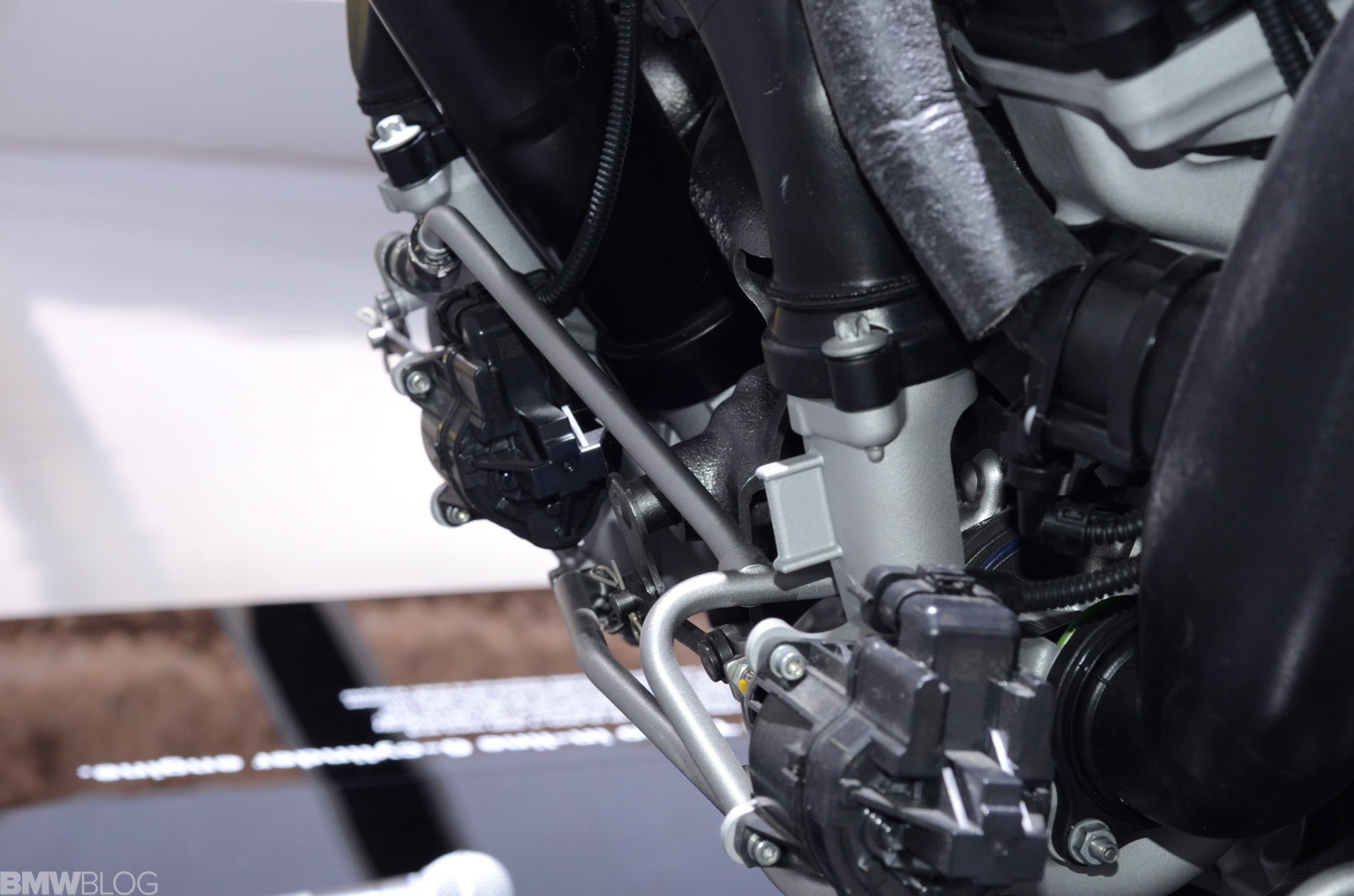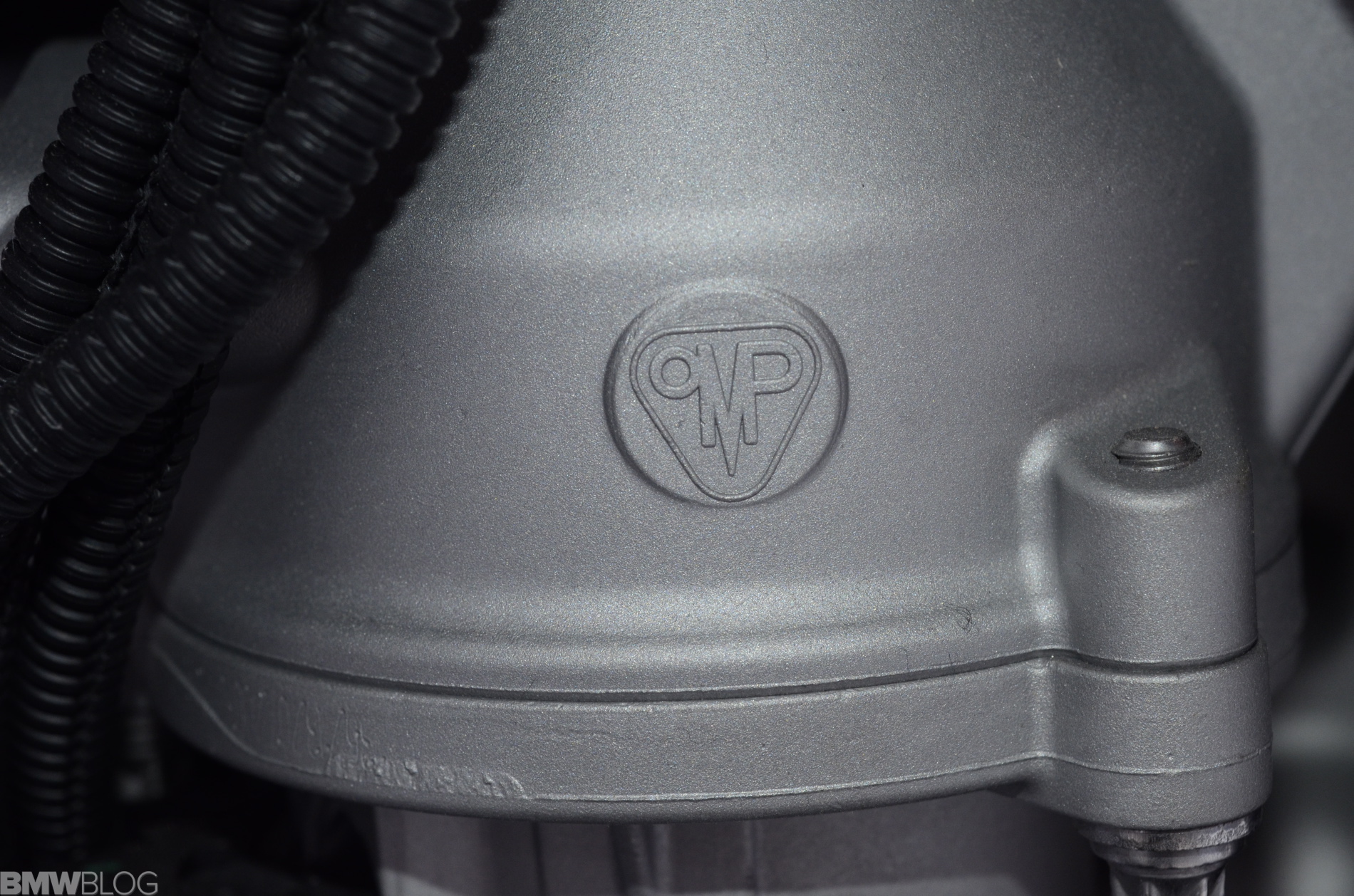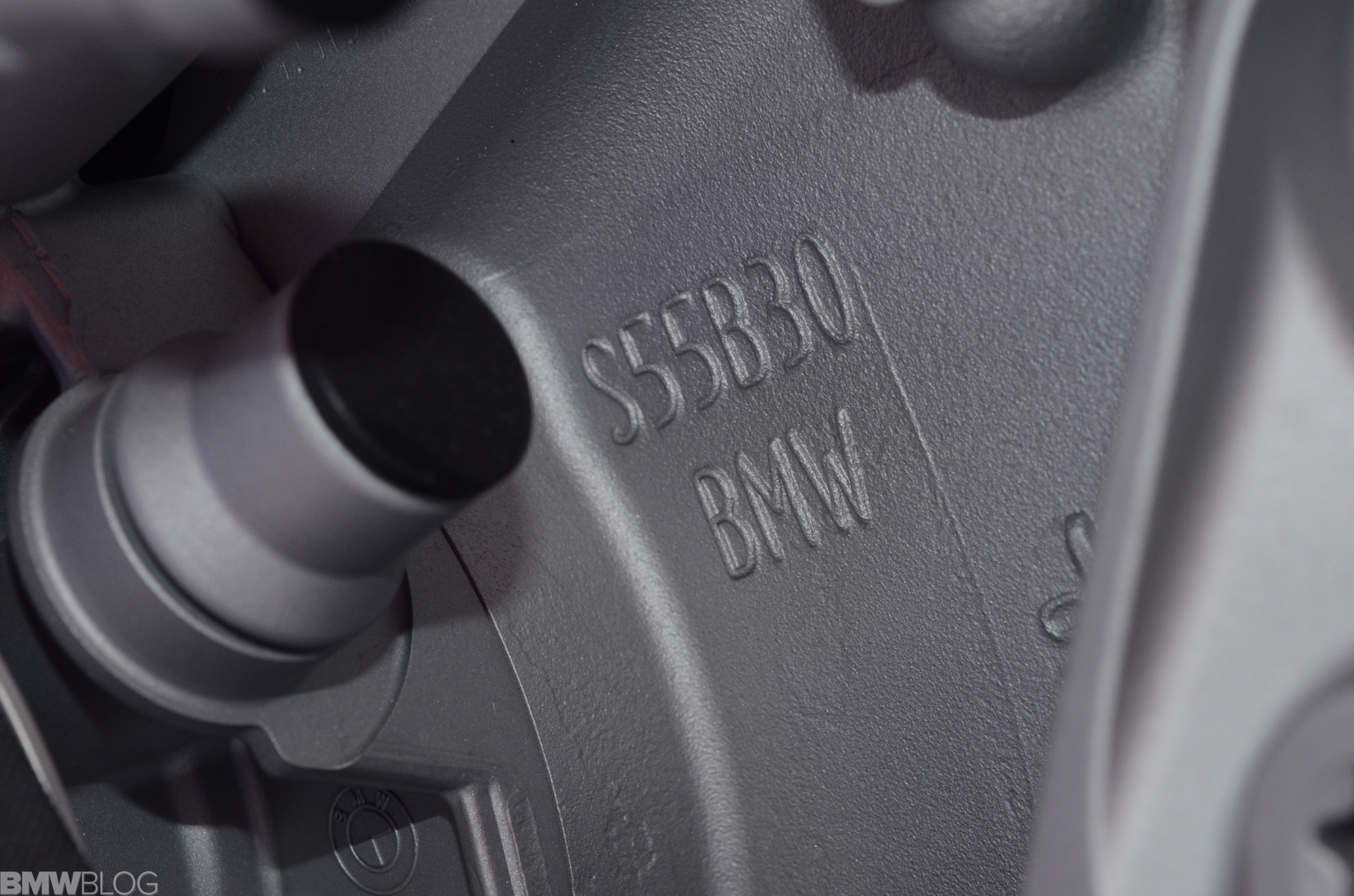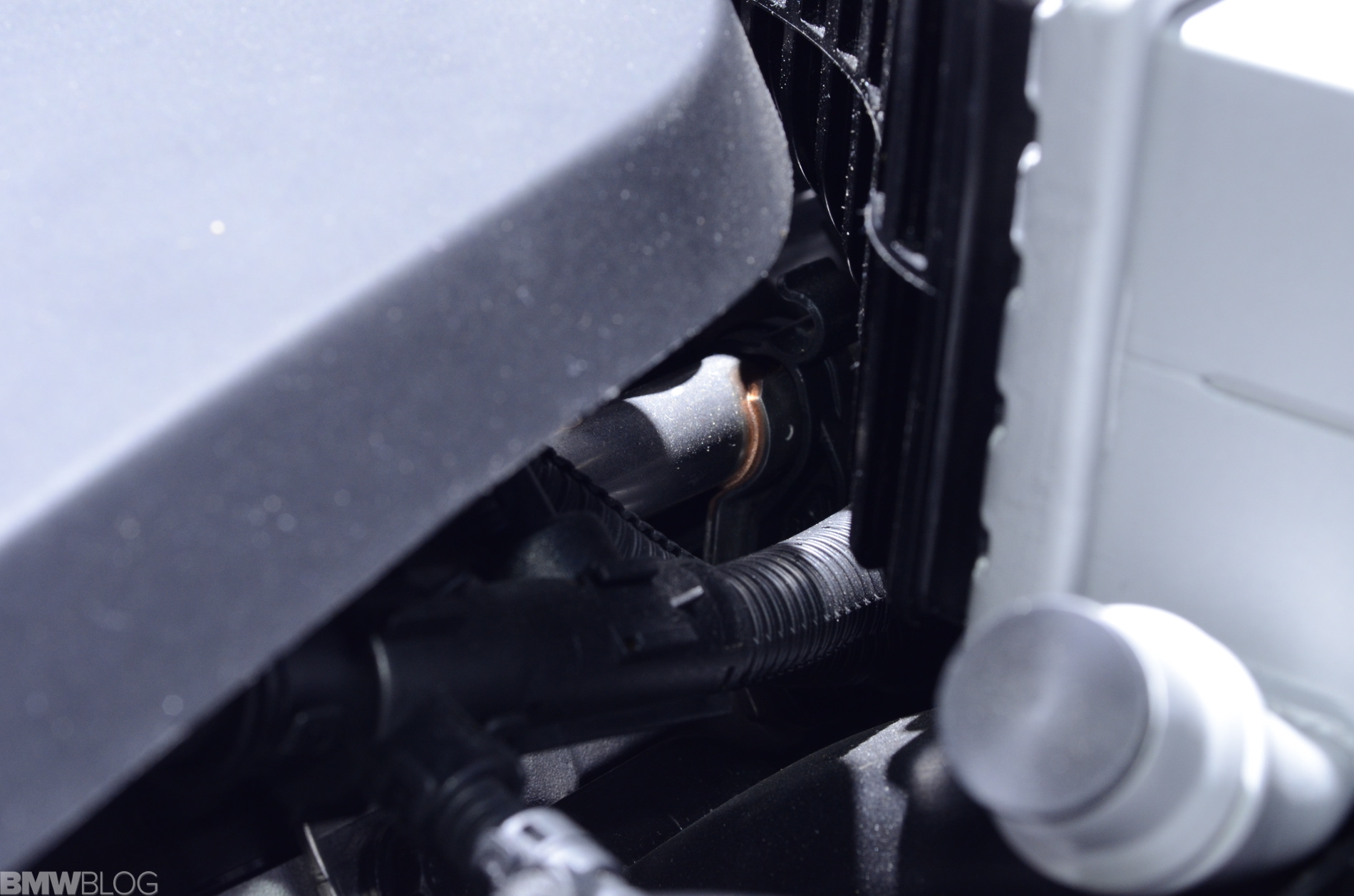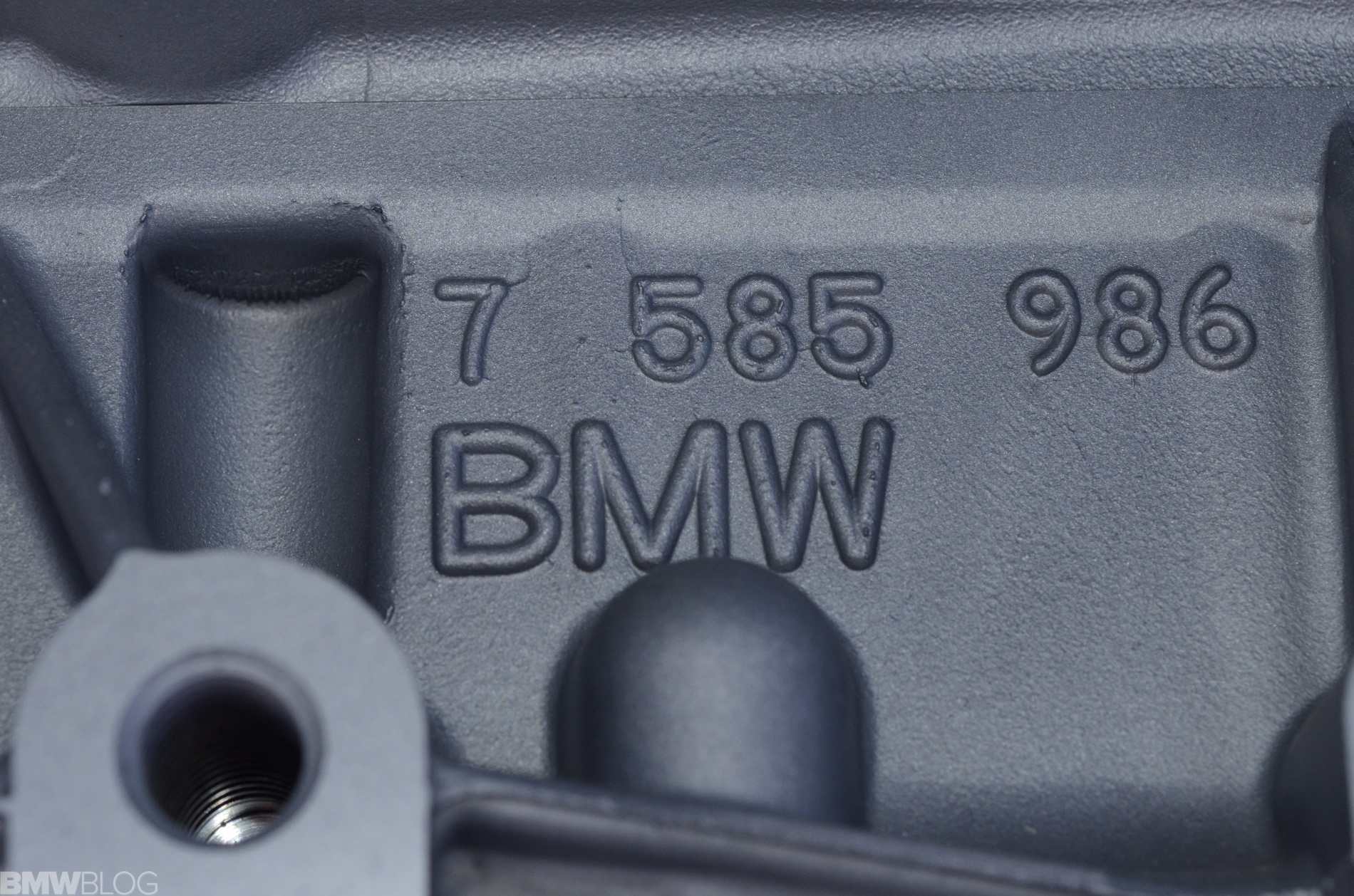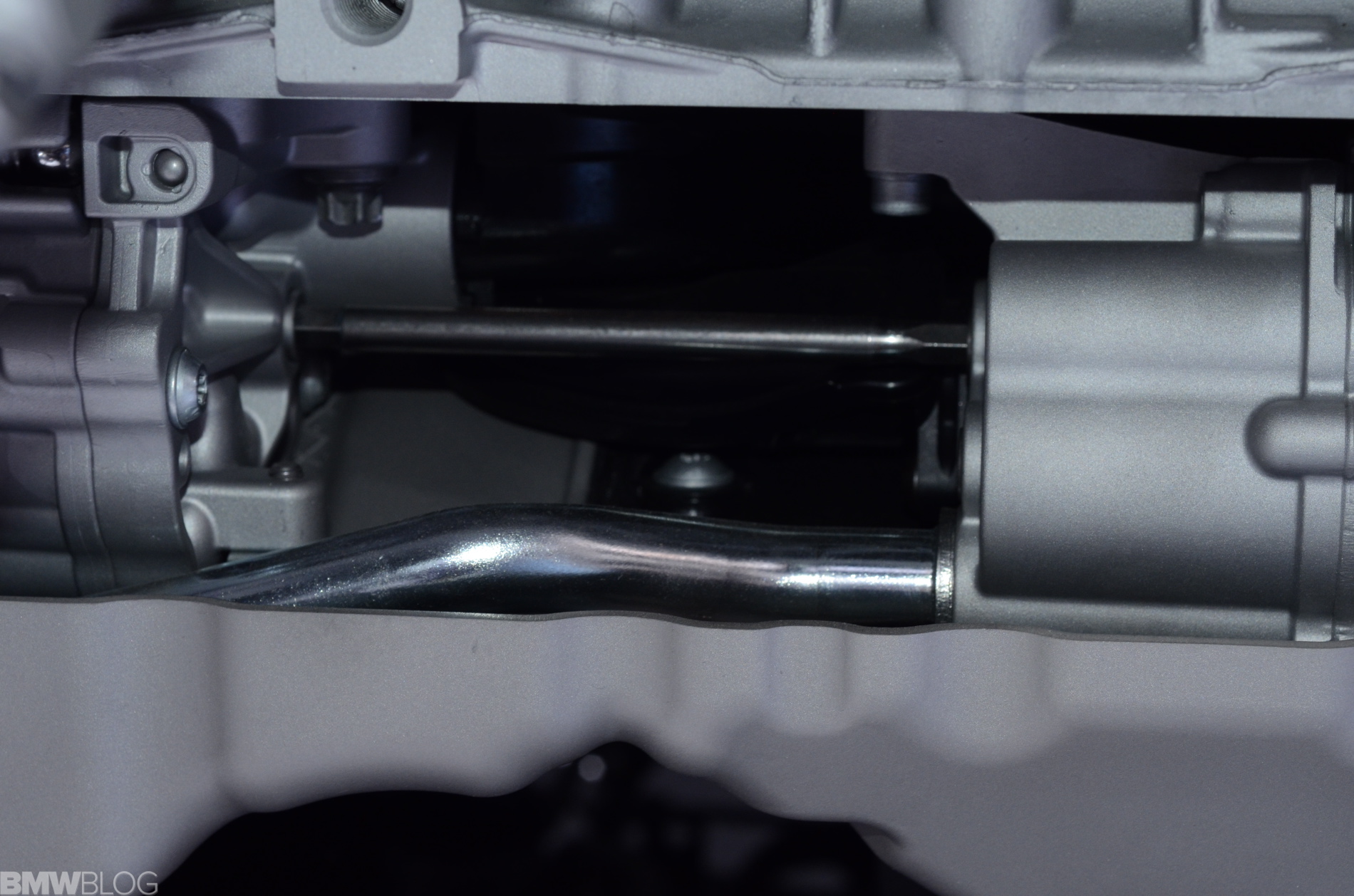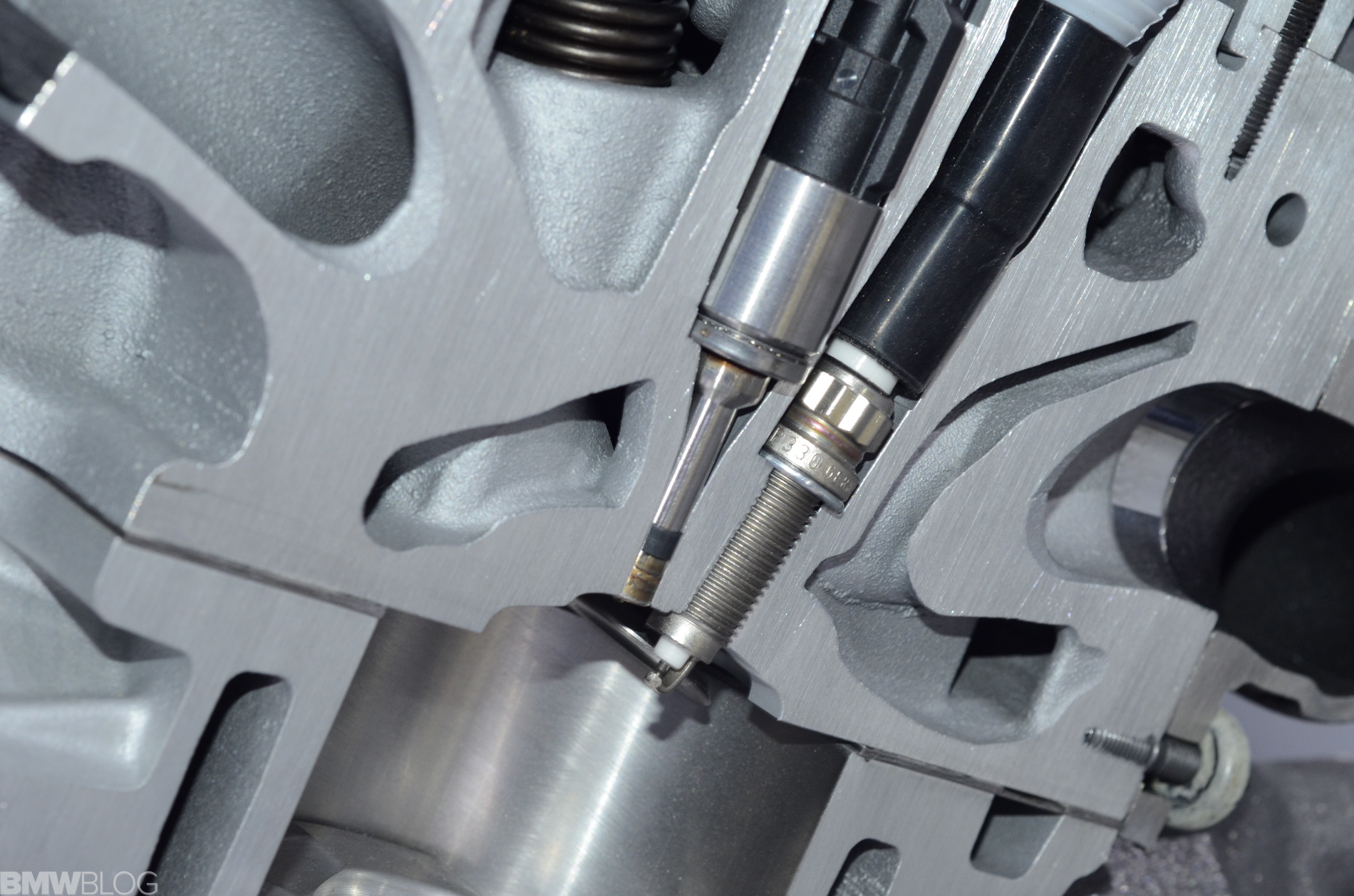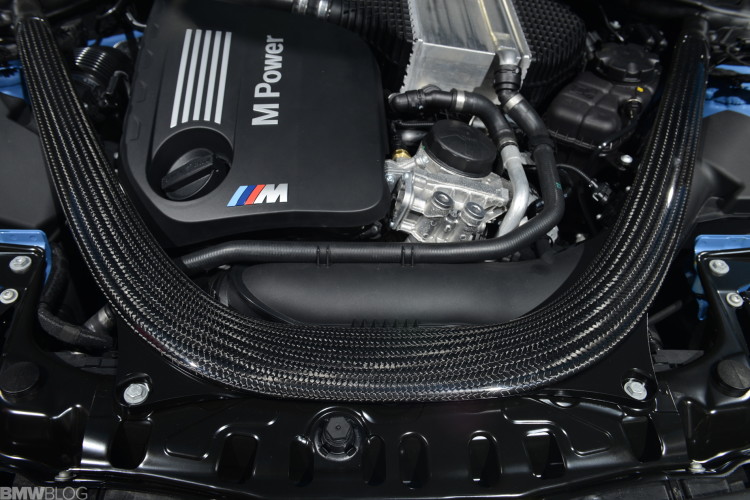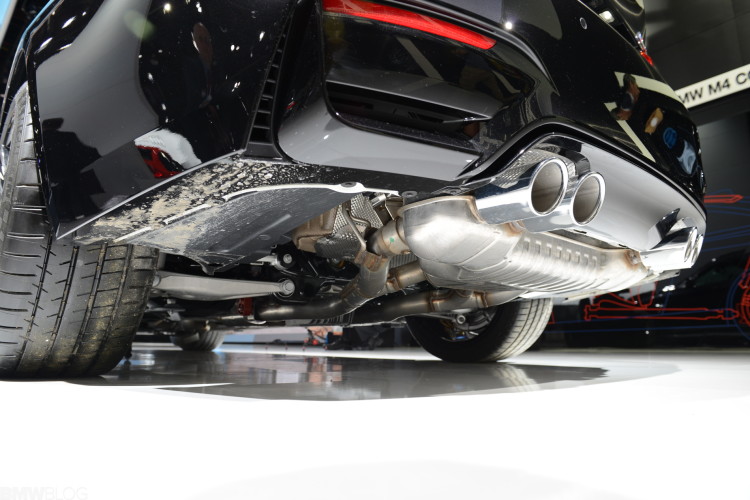Engine/Drivetrain
BMW has reverted to an inline six cylinder for the new M3 and M4. But unlike the S54 in the E46 M3, the new S55 is turbocharged. Based on the N55 six cylinder, the S55 utilizes VANOS and Valvetronic as well as gasoline direct injection in the cylinder heads. But unlike the N55’s twin-scroll single turbocharger, the S55 utilizes two turbochargers, one turbo per three cylinders. Given all of the heat the engine is capable of producing, BMW has taken great care in ensuring that it is properly controlled, especially knowing that the M3/M4s will see a lot of track time.
The S55 is set to deliver 431 HP and 406 lb-ft of torque. To ensure that nothing untoward happens on the bottom end the S55 employs a forged steel crankshaft. The torque developed by the S55 is fully available from 1,850 to 5,500 RPM which leads one to believe that the turbos selected for use on the S55 are slightly larger than the ones employed on the N54 motor of yore. Two tidbits worth considering are the huge increase in torque over the outgoing V8 and the approximately 25% increase in fuel economy of the S55 over the V8.
Attached to the S55 will be one of two available transmissions. A six speed manual with dry sump lubrication (forced oil feed rather than the gear-train sitting in a ‘splash bath’ of oil) is available. The six speed manual will have some software integration with the ECU in that it will blip the throttle on downshifts (rev-match engine RPM to road RPM). The available third generation M DCT seven speed transmission will offer launch control and stability clutch control. Stability clutch control is an interesting feature that disengages the clutch momentarily, invoking a whiff of power of oversteer when too much understeer is detected by the car’s electronics. Think of it as augmented stability control.
The power from the transmission is delivered to the Active M Differential, a multi-plate electronically collected limited slip differential, via a carbon fiber prop shaft. The carbon fiber shaft saves weight, provides more than adequate strength and reduces inertia in the drivetrain. Of course tying everything together is the software and electronics that monitor vehicle dynamics and intervene based on the requirements of the situation.
Suspension/Steering/Brakes
The M3/M4 utilize BMW’s proven double pivot strut front suspension and multi-link rear suspension. The front and rear suspensions utilize M specific aluminum components which are light weight and biased towards stiffness. The front suspension has additional stiffening in the form a CFRP strut brace, aluminum stiffening plate, and additional connection points between the sub-frame and the chassis. The downside of the additional stiffening may be additional harshness but the responsiveness gained is beneficial. The suspension features the M Adaptive suspension settings of Comfort, Sport, and Sport +.
Another benefit of the additional stiffening may be an acceptable level of feedback for the electrically-assisted power steering (EPS), which BMW M employs for the first time. It will be interesting to read the reviews of the steering gear to determine how much ‘feedback’ the EPS provides. Since the EPS utilizes software to control its responses, different settings can be utilized ‘on the fly’. The EPS will have Comfort, Sport, and Sport + settings, and the hope is that most drivers will leave it in Sport +.
Regarding the use of EPS however, one would think that BMW would not deploy EPS in this critical set of M cars if they weren’t confident that they had achieved a level of feedback M drivers expect. Braking is provided by M compound brakes and optional M carbon ceramic brakes (with gold brake rotors).
Electronics
There is a good deal of integration between drivetrain and chassis, especially if the M DCT transmission is specified. In addition there is a BMW M Laptimer app available for the driver’s smartphone than we connected via USB cable or the optional phone cradle can record lap data and playback the data graphically on the smartphone’s screen. AN optional heads-up display is also available and it too contains M specific functionality.
The M3/M4 exhibit a degree of technological capability/creativity that were unimaginable when the original M3 was conceived. For better or worse the tight integration of mechanical systems with electronics (and lines and lines of software code) make the new M3/M4 what it is.



